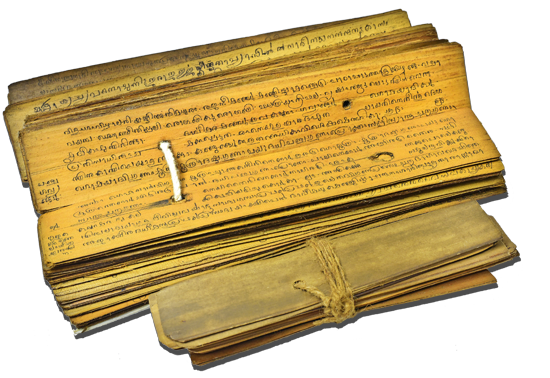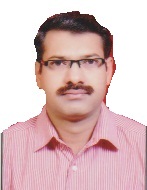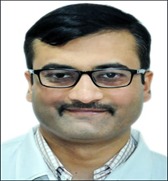Sanskrit Samhita Siddhant
Sanskrit Samhita Siddhant :

Samhita Siddhanta department deals with the study of basic principles of Ayurveda which are described in classical treatise i.e. Ayurveda Samhitas. This is the first and most important subject in Ayurved Syllabus. Samhita Sidhhanta department imparts the knowledge and understanding of basic principles like panchamahabhuta siddhanta, tridosha siddhanta, diagnostic and treatment principles. The Scientific and Philosophical relationship between the microcosm and the macrocosm are taught through Sanskrit, Padartha Vigyan, Charaka Samhita and Astanga Hridaya
Sanskrit (Language) :
As all the basic literature(Samhita) of Ayurveda was written in Sanskrit, it is becomes essential to have the basic knowledge of Sanskrit as a language; which helps to read, understand the Ayurvedic text (Samhita) and apply it successfully on the patients. Samhitas are basically written in Sanskrit hence for better understanding of samhita, Sanskrit is taught as a subject.
Ayurveda Itihas :
The origin of Ayurveda and its Development are teaches in this subject. It gives the understanding about the historical aspect of Ayurved. It is also offers the knowledge about the present scenario regarding developments of Ayurveda such as scientific journals, research work, books etc.
Padartha Vidnyana :
This provides strong basic philosophy for the interpretation of Ayurveda theories through nine schools of thoughts called as Darshan Shastra’.
Ayurveda Itihas :
The origin of Ayurveda and its Development are teaches in this subject. It gives the understanding about the historical aspect of Ayurved. It is also offers the knowledge about the present scenario regarding developments of Ayurveda such as scientific journals, research work, books etc.
Astanga Hruday & Maulik Siddhant :
This is an ancient literature created by multi-faceted eminent scientist of Ayurveda named Vagbhata’ in 61″ century A.C. which deals with 8 branches of ayurveda as follows
1) Kayachikitsa (General Medicine)
2) Balachikitsa (Paediatrics)
3) Grahachikitsa (Study of extra-human entities)
4) Ooradhavanga Chikitsa (Study of head, neck & throat)
5) Shalayatantra (Surgery)
6) Danshtra (Toxicology)
7) Jara Chikitsa (Anti – aging)
8) Vrisha Chikitsa (Study of impotence & infertility)
Maulik Siddhant is recently added subject in the syllabus of Ashtang Hruday, in this subject all valuable principles mentioned in our Ayurvedic literature .
Charak Samhita :
This is an ancient literature created by Acharya Agnivesh in1500 B.C. which was furtherer-designed by Acharya Charak and completed by Acharya Drudhabal. This is one of the salient text widely accepted in the field of Ayurveda to offer the knowledge of maximum possible pathological conditions and the treatment principles For easy understanding Charak Samhita is included in syllabus by dividing it into two parts as Purvardha & Uttarardha for students
- Department Staff
- Departmental Facilities
- Activity
- Achievements
- Future Plans
- Photos
Teaching Staff | ||||||
SR.NO | NAME | DESIGNATION | QUALIFICATION | TEACHERS CODE | STATE REGISTRATION NUMBER | PHOTO |
1 | Dr.Mahesh Bhaskarrao Patil | Professor | BAMS,MD | AYSS01050 | I-35022-AI |  |
2 | Dr. Tushar Hemant Shelar | Reader | B.A.M.S, M.D | AYSS00953 | I-67761-A |  |
3 | Dr. Vaibhav Sadashiv Sonar | Lecturer | B.A.M.S, M.D | AYSS00278 | I-57698-A |  |
4 | Dr. Angha Ajit Buwa | Lecturer | B.A.M.S, M.A | AYSN00327 | I-23674 |  |
Sr. No | Infrastructure | Details |
1 | Available Area | 104.75 Sq.mt |
2 | Library Books | 60 |
3 | Charts | 106 |
4 | Models | 10 |
5 | Specimens | 36 |
- Seminar
- Quiz Competition
- Samhita Vachan
- Guest Lectures
- Group Discussion
- Model making Competition
Dr.Smita Anil Pawar | |||||||
Sr. No | Title Of Article | Name Of Journal | Year Of Publication | (ISSN No. / ISB No.) | Volume No. | Issue No. | Page No. |
1 | Critical Appraisal of Indian culinary Sciencew.s.r.to Kshemakutuhala | www.pharmasm.com | 2012 | 0976-7908 | 4 | 1 | 3455 – 3470 |
2 | REVIEW ON RAKTADHARA KALA IN PERSPECTIVE OF ACHARYA SUSHRUT | JOURNAL OF BIO INNOVATION | 2017 | 2277-8330 | 6 | 6 | 1057 – 1065 |
3 | ANALYSIS OF SHUKRA IN CONTEXT OF SHARIR RACHANA | JOURNAL OF BIO INNOVATION | 2019 | 2277-8330 | 8 | 6 | 966 – 972 |
4 | SHADANGA SHARIR IN MODERN ANATOMY – REVIEW ARTICLE | JOURNAL OF BIO INNOVATION | 2019 | 2277-8330 | 8 | 3 | 254 – 260 |
5 | A REVIEW ARTICLE – PANCHAKARMA (DETOXIFICATION) SHODAN KARMA ACCORDING TO AYURVED SAMHITA | JOURNAL OF BIO INNOVATION | 2020 | 2277-8330 | 9 | 5b | 201 – 210 |
6 | A REVIEW ARTICLE ON CONCEPTUAL AND APPLIED STUDY OF SNIGDHA AND RUKSA GUNA ON RASA RAKTAGATA SNEHA (HYPERLIPIDEMIA) | JOURNAL OF BIO INNOVATION | 2020 | 2277-8330 | 9 | 6 | 1700 – 1706 |
Dr. Tushar Hemant Shelar | |||||||
Sr. No | Title Of Article | Name Of Journal | Year Of Publication | (ISSN No. / ISB No.) | Volume No. | Issue No. | Page No. |
1 | Ayurvedic conservative management of External Thrombosed Haemorrhoid-A Case Study | International Journal of Trend in Scientific Research and Development | 2021 | 2456-6470 | Vol-5 | Issue-5 | 32 – 35 |
2 | KSHARSUTRA as a potential therapy in the management of Pilonidal Sinus | Journal of Sanskrit Samhita and Siddhant | 2017 | 2454-3926 | Volume 2/4 April-Jun | Volume 2/4 April-Jun | 14 – 16 |
National Level Seminar
Quiz Competition
Essay Competition

